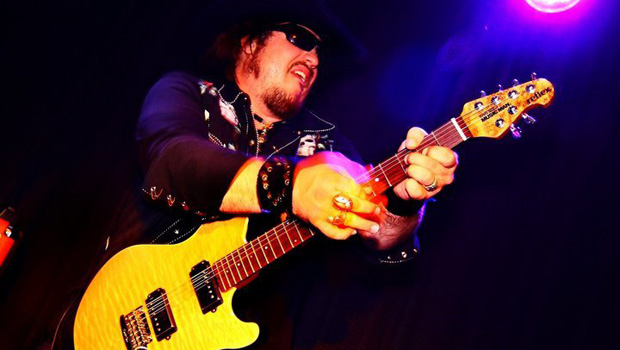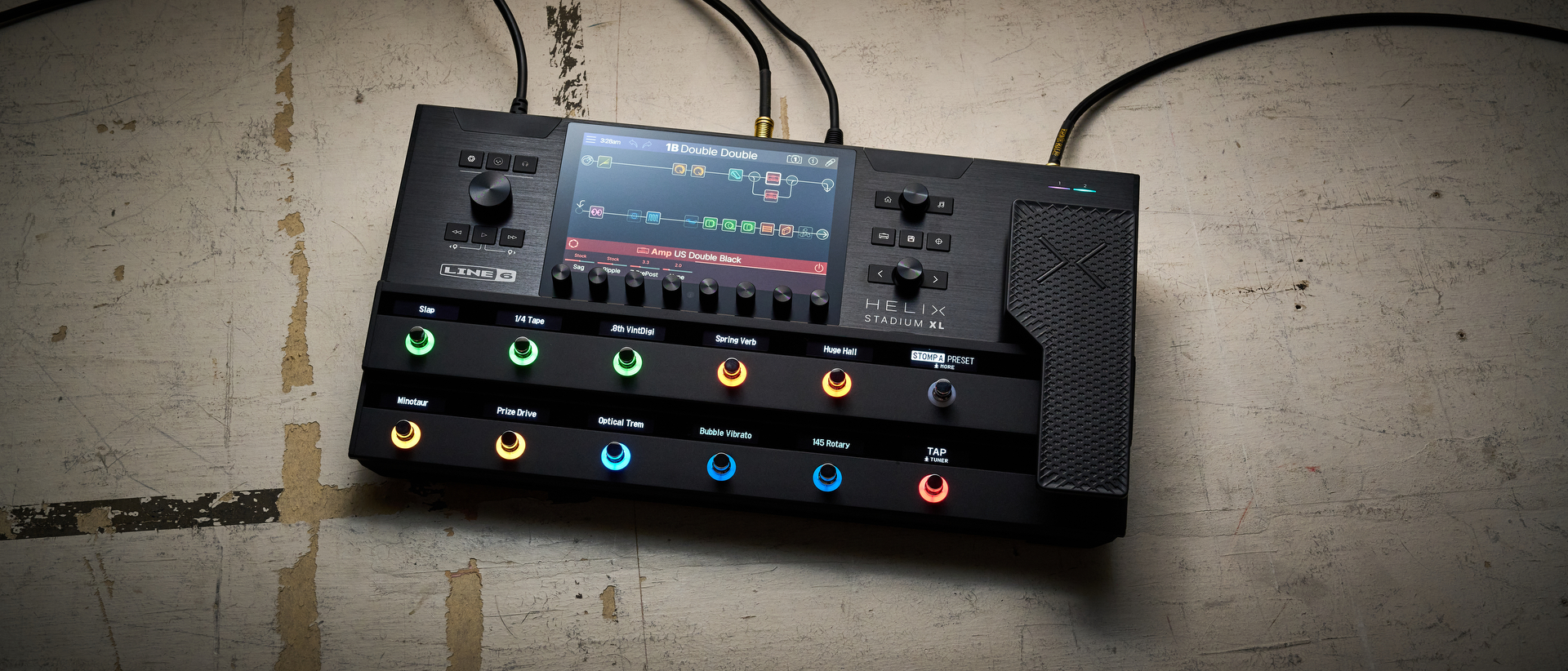Interview: Guitarist Lance Lopez Discusses His New Album, 'Handmade Music'

Lance Lopez is one very few guitarists who can say they started their career at age 14, when he began performing professionally with older, more seasoned musicians in New Orleans -- and understanding the elements of rock, blues, funk and R&B.
By the time he was 18, the Shreveport, Louisiana-born Lopez had toured with soul singer Johnnie Taylor and blues legend Lucky Peterson.
Since then, Lopez, who is based in Dallas, has released three studio albums, perhaps causing the biggest buzz with 2010's Salvation From Sundown, which was produced by Jim Gaines (Stevie Ray Vaughan, Santana).
[[ Check out a stream of the new Lance Lopez album, Handmade Music, on GuitarWorld.com. ]]
His new album, Handmade Music, is an exploration into the roots of blues that pushes the genre into new territories. Lopez tips his hat to everyone from Mississippi Fred McDowell to Jimi Hendrix on Handmade Music, which Lopez calls a blues record with a major rock twist.
Guitar World sat down with Lopez to talk about the early days of his career, his gear and where he’s at today.
GUITAR WORLD: You’ve been a musician basically all your life. What were your original influences?
All the latest guitar news, interviews, lessons, reviews, deals and more, direct to your inbox!
I started playing when I was 8, and I was in the country with my family when one of my uncles had guitars and amps and stuff in his home. And we would have big family get-togethers out in the country and they would play guitars. When someone put down a guitar, I would pick it up. I was just immediately attracted to it. There was just a connection. I don’t know where it came from, but I was just always attracted to guitars. I remember always passing by music stores when I was even younger and I was just so enthralled with guitars and drums in the windows of music shops.
Growing up, we had a lot of videos of Elvis Presley. My father was actually in the Army with Elvis, and they were really close in the Army and remained close. We had pictures in our home of my dad and Elvis together, and then I would see the guy on TV, so it was really cool. I was born about a month after he passed away. So it was a really big influence. My father really encouraged me to play once I had the interest to play. He really encouraged me. So by the time I was 12, I was serious about playing guitar.
When I was 10, I heard Jimi Hendrix for the first time. That totally changed my life. So that pretty much set the standard for me. I really looked for other guitars players from that era or who sounded like that. When I saw Stevie Ray Vaughan, I found that sound. I first saw Stevie Ray Vaughan when I was 12. And that was another big life-changing experience. That’s when I was like, “There it is, that’s the sound.” And then he was gone. But they really influenced me to not only study their styles, but also study the styles of the people who influenced them.
You’ve been a professional musician since you were about 14. How did you get to play in bars at such a young age?
When I was 14, we moved back in forth with my father between Texas and Louisiana. When I moved to New Orleans with my father, he began to really encourage me. It was like non-stop music in New Orleans in those days. I started going out with my dad to bars and stuff, and different bands would be playing. Next thing you know they would hire me; then people would hear about me playing and they would hire me. I was pretty grateful. I would play round the clock even. I’d go out and work from 5 in the afternoon to 5 in the morning because none of the bars closed. So what I would do is a happy hour gig from 5 p.m. to 8 a.m. with one band, then I’d do a regular gig until 12 with another band, then do another gig from like 1 a.m. to 4 a.m. Then I’d go home and take a nap and then get up and go to school.
We moved around a lot. We moved to Florida, and I did the same thing. I would go to blues jams or open-mike jams and just join bands and start working. So that’s pretty much the better part of what my later junior high and high schools years were.
You had a pretty lucky start. When you were young, did you appreciate how much you had going for you?
Absolutely. I was very grateful to have my dad. For one, he would take me into a club, that way I could get in. I guess a lot of the people who saw me, saw I took playing very seriously. I always knew this was what I wanted to do.
You toured with Lucky Peterson. How did that influence your career?
Lucky was one of the greatest musicians I ever worked with. He plays drums, keyboards and guitars, and he’s a phenomenal singer. I learned so much from him; he was a big inspiration and just such an amazing talent. I actually took a gig when I was 17 working for Johnnie Taylor for a couple of months. Then I met Lucky right after that and then next you know we were in Europe. So it all came really quick.
Playing in Lucky’s band taught me to be such a great rhythm player and ensemble player and how to orchestrate and put different pieces of a band together. By the time I left that band, I was the musical director. Which was kind of funny because I was much younger then most of the people in the band so they just kind of ignored me anyway. So I learned a lot form Lucky and just was able to go around the world and see so many different places for the first time in my life.
You have three studio albums and one live album under your belt. What instruments to you play in the studio versus live?
Early in my career, I played Stratocasters for a very long time. I just always had Stratocasters and always, always loved the sound. They were great for ensemble playing. Lucky Peterson, he played an ES-335 and that’s when I started really getting into Gibsons. I had a couple of Les Pauls back then. But by the time I started recording my early records, I went back to a Stratocaster. I was really using a lot of that Stratocaster and Marshall amp combo because I was heavily influenced by Hendrix and was really going for some of those tones and sounds. So I started recording with them and I use them live all the time. But I will always switch back and forth between the Stratocaster and the Les Paul.
Later on I started using more Gibson guitars. But I always found switching guitars was really hard to do live. I would record one song with a Stratocaster and then one with a Les Paul, but when it came to doing it live, it was hard to pull off. Really, one of the things that helped me was working with Music Man. I can get all the sounds with just one guitar. I’ve been working with Music Man lately, and they’re awesome. It’s a great relationship.
Tell me about the new album, Handmade Music, and what it was like to work with producer Jim Gaines.
Working with Jim Gaines was kind of the key to Salvation From Sundown. I’ve heard nothing but high praise on Jim Gaines, and I knew he worked with Stevie Ray Vaughan and Santana. People I knew just talked about how great he was.
I recorded the follow-up to Salvation From Sundown just this past summer, and we were touring pretty heavily all 2011. And then we stopped and recorded an album in June and July. We finished the album in Gaines' studios, called Bessie Blues Studios. So it was really neat to do that. We did the entire record in Tennessee. It’s got a lot more rock then Salvation From Sundown. Salvation was very bluesy; this album has got a lot more rock vibe to it. Now we’re ready to get out on the road behind it. We’re having rehearsals and we’re always playing down here in Texas.
Handmade Music was released today, March 6, via MIG Music. Keep up with Lopez on his official Facebook page.
[[ Check out a stream of the new Lance Lopez album, Handmade Music, on GuitarWorld.com. ]]
